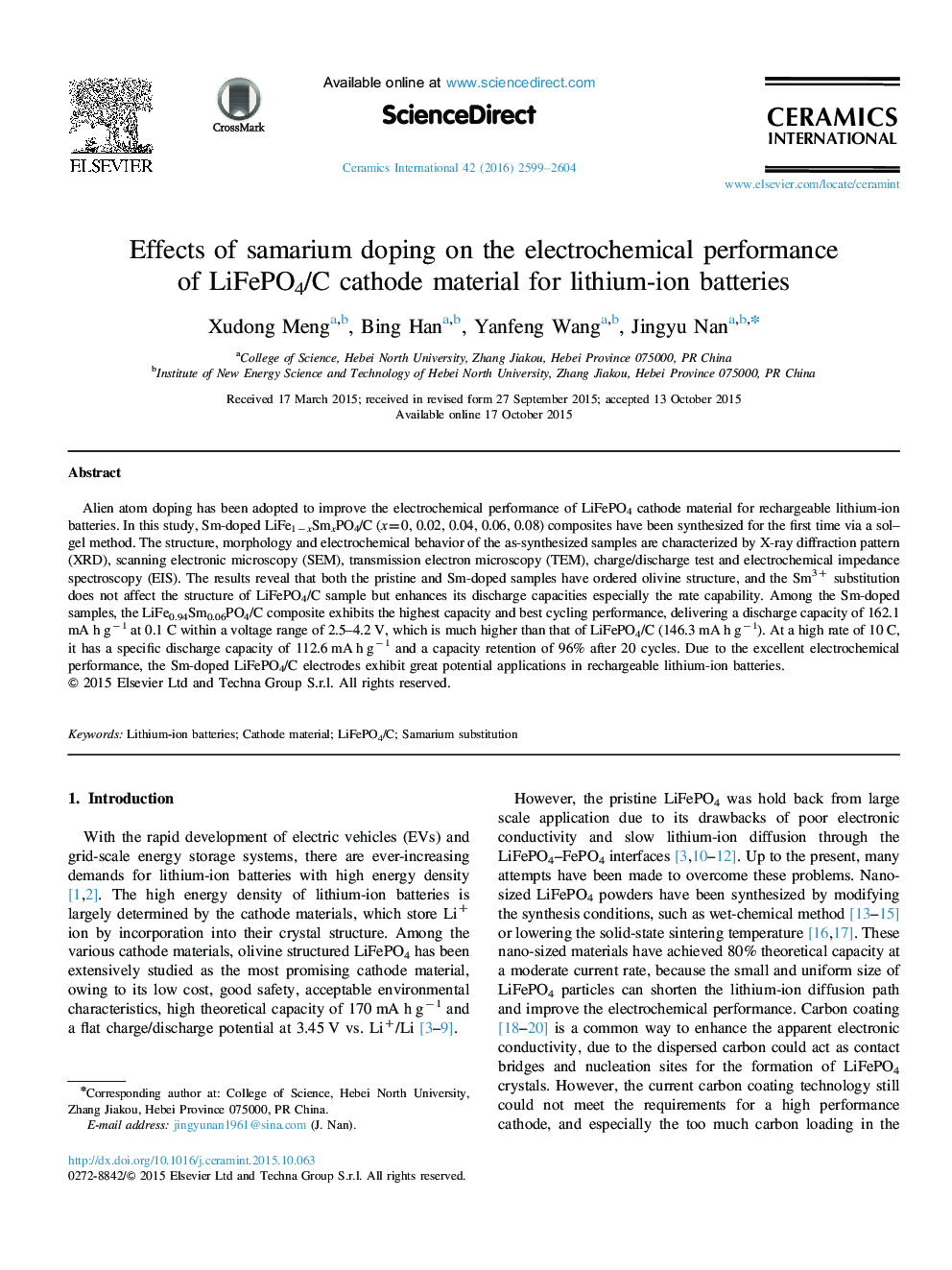| Article ID | Journal | Published Year | Pages | File Type |
|---|---|---|---|---|
| 1458953 | Ceramics International | 2016 | 6 Pages |
Alien atom doping has been adopted to improve the electrochemical performance of LiFePO4 cathode material for rechargeable lithium-ion batteries. In this study, Sm-doped LiFe1−xSmxPO4/C (x=0, 0.02, 0.04, 0.06, 0.08) composites have been synthesized for the first time via a sol–gel method. The structure, morphology and electrochemical behavior of the as-synthesized samples are characterized by X-ray diffraction pattern (XRD), scanning electronic microscopy (SEM), transmission electron microscopy (TEM), charge/discharge test and electrochemical impedance spectroscopy (EIS). The results reveal that both the pristine and Sm-doped samples have ordered olivine structure, and the Sm3+ substitution does not affect the structure of LiFePO4/C sample but enhances its discharge capacities especially the rate capability. Among the Sm-doped samples, the LiFe0.94Sm0.06PO4/C composite exhibits the highest capacity and best cycling performance, delivering a discharge capacity of 162.1 mA h g−1 at 0.1 C within a voltage range of 2.5–4.2 V, which is much higher than that of LiFePO4/C (146.3 mA h g−1). At a high rate of 10 C, it has a specific discharge capacity of 112.6 mA h g−1 and a capacity retention of 96% after 20 cycles. Due to the excellent electrochemical performance, the Sm-doped LiFePO4/C electrodes exhibit great potential applications in rechargeable lithium-ion batteries.
